Table Manner in Japan
Many foreign tourists know very little about Japanese table manner. Japan is a country that pays high attention to etiquette. Japanese people are meticulous in everything, including dining etiquette. Japanese table manner has a lot of details from pre-meal to post-meal, and from the first dish to the last dish. However, when dining with foreigners, the local Japanese understand the difference in culture and are lenient on the table manner. Nevertheless, having a basic grasp on Japanese table manners will benefit during your visit to Japan. So what are the most important rules in Japanese dining etiquette? Let's find out together!
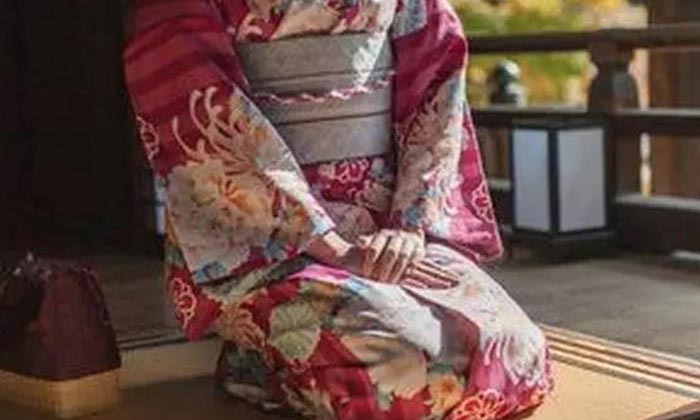
In the dining room, the elders or seniors should sit farthest from the door, while the younger or the juniors should closer to the door. If it is a private party, the person who pays the bill would usually be the one sitting near the door.
2) Utensil
The four major utensils in Japan include chopsticks, tea cups, rice bowls and soup bowls. Japanese usually place the rice bowl on the left and soup bowls on the right. Chopstick is placed horizontally in the middle on a chopstick holder. The Japanese like to use small dishes to serve appetizer. Any dipping sauces such as soy sauce or mustard will be hold in small bowls, and will be served individually to each guest.
3) Meal Order
Generally speaking, the plates are served in particular order. Appetizers will be served first while guests are waiting.These appetizers, or cold dish platter, are provided to guest to eat while they are enjoying the wine. Then, main course such as sashimi and cooked dishes will be served. Lastly, miso soup, rice, pickles, and desserts will be served.
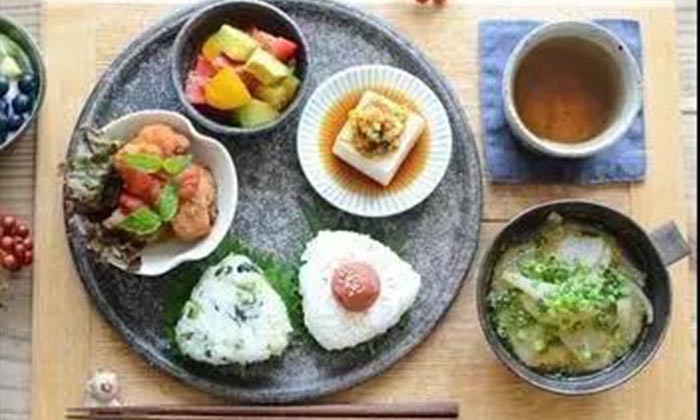
4) Table Manner during the Meal
Traditional Japanese food is placed in several small dishes, and you should eat each dish in order rather than eating only one dish. When eating noodles, the Japanese would suck the noodles directly from the soup bowl and make a sound, to praise the chef that the noodle is delicious. When eating sushi, hold it in bare hand, dip it in soy sauce, and then put in mouth. For shared dishes, it is important to take a portion of food to your own plate first before eating. Additionally, get used to holding your bowl when eating to prevent food from falling off.
It is also considered impolite to pour drinks for yourself. Instead, you should pour for other people and vise versa. If you can't drink much, still take a small sip when everyone else toasts to show respect. If you don't want to drink anymore, then leave your cup full. When someone is pouring wine for you, you can also cover the cup with your hand, indicating that you don't want anymore. If you need to clean your teeth, make sure to cover your mouth with your hands.
5) Taboo on the table
The Japanese do not prefer to fully fill the rice bowl when serving guests. Don't knock on the rice bowl during meals. Don't place chopsticks on dishes or stab on rice. Also, don't point chopsticks at others. Do not poke food with chopsticks or stir the plate to find food. When you want to distribute food to other people, only use the clean end of chopsticks. When dining as a guest, avoid eating just a bowl of rice even when you are full. Because eating only one bowl will be regarded as a miss with the host, it is important to ask for rice refill at least once.
Don't leave any leave leftover on your bowl, as respect for the owner and praise for the chef. When dining, you can use the wet towel to wipe your hands, but never use it to wipe your face and neck as it is impolite. Refrain from tabbing your clothing, styling your hair, or cleaning your nails during meal because it is unhygienic and impolite. At a banquet, avoid talking or standing up with food in your mouth. Also avoid talking loudly with people who are far away. Lastly, don't use hand sign or criticize other people.
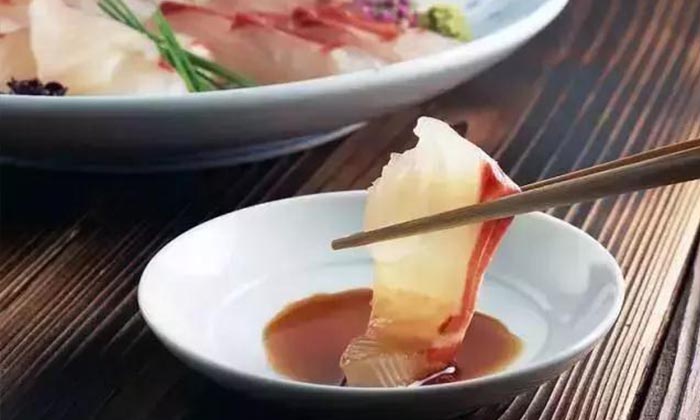
Etiquette on Eating Different Food
1) Rice
Hold the rice bowl in one hand and chopsticks in the other. Lift the bowl to your mouth to eat. Rice can only be filled 70% to 80% full because a fully fill bowl means farewell.
2) Noodle
Use chopsticks to bring the noodles into your mouth and slurp up the noodle. Eating noodles with sounds in Japan is normal and not considered rude. To drink the noodle soup, you can use a spoon or drink directly from the bowl.
3) Soup
When drinking soup, hold the bowl in your left hand and the chopsticks in your right hand. Bring the bowl to your mouth to drink, and you can stir with chopsticks while drinking. To hld the bowl, leave your thumb on the rim of the bowl, and place other fingers at the bottom of the bowl. Don't feel uncomfortable to make a sound when drinking soup. In fact, making a sound indicates that the soup is very delicious and is a respect for the chef.
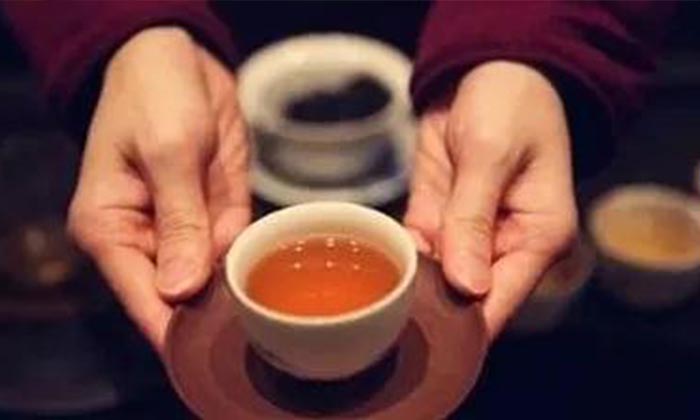
Etiquette on Drinking Tea
The Japanese love to drink tea, and different types of tea are served at various times during one meal. Green tea is usually served before meals, and sencha is served during and after meals. In addition, men and women have different tea drinking etiquette. When drinking tea, women is expected to hold the tea cup with both their hands. Men, on the other hand, can hold the tea cup with one or both hand.
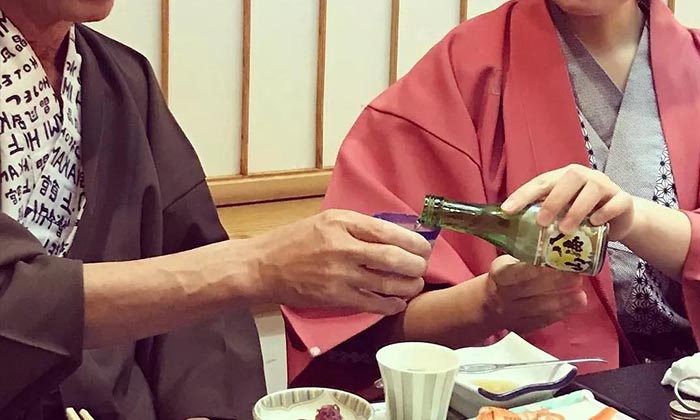
As a reliable Japan travel agency, we are happy to provide you budget Japan group tours, and private car/limousine service, if you need more information on Tokyo tours, and Tokyo limousine service, please feel free to contact our specialists.
Many foreign tourists know very little about Japanese table manner. Japan is a country that pays high attention to etiquette. Japanese people are meticulous in everything, including dining etiquette. Japanese table manner has a lot of details from pre-meal to post-meal, and from the first dish to the last dish. However, when dining with foreigners, the local Japanese understand the difference in culture and are lenient on the table manner. Nevertheless, having a basic grasp on Japanese table manners will benefit during your visit to Japan. So what are the most important rules in Japanese dining etiquette? Let's find out together!

Dinning Etiquette in Japan
1) SeatingIn the dining room, the elders or seniors should sit farthest from the door, while the younger or the juniors should closer to the door. If it is a private party, the person who pays the bill would usually be the one sitting near the door.
2) Utensil
The four major utensils in Japan include chopsticks, tea cups, rice bowls and soup bowls. Japanese usually place the rice bowl on the left and soup bowls on the right. Chopstick is placed horizontally in the middle on a chopstick holder. The Japanese like to use small dishes to serve appetizer. Any dipping sauces such as soy sauce or mustard will be hold in small bowls, and will be served individually to each guest.
3) Meal Order
Generally speaking, the plates are served in particular order. Appetizers will be served first while guests are waiting.These appetizers, or cold dish platter, are provided to guest to eat while they are enjoying the wine. Then, main course such as sashimi and cooked dishes will be served. Lastly, miso soup, rice, pickles, and desserts will be served.

4) Table Manner during the Meal
Traditional Japanese food is placed in several small dishes, and you should eat each dish in order rather than eating only one dish. When eating noodles, the Japanese would suck the noodles directly from the soup bowl and make a sound, to praise the chef that the noodle is delicious. When eating sushi, hold it in bare hand, dip it in soy sauce, and then put in mouth. For shared dishes, it is important to take a portion of food to your own plate first before eating. Additionally, get used to holding your bowl when eating to prevent food from falling off.
It is also considered impolite to pour drinks for yourself. Instead, you should pour for other people and vise versa. If you can't drink much, still take a small sip when everyone else toasts to show respect. If you don't want to drink anymore, then leave your cup full. When someone is pouring wine for you, you can also cover the cup with your hand, indicating that you don't want anymore. If you need to clean your teeth, make sure to cover your mouth with your hands.
5) Taboo on the table
The Japanese do not prefer to fully fill the rice bowl when serving guests. Don't knock on the rice bowl during meals. Don't place chopsticks on dishes or stab on rice. Also, don't point chopsticks at others. Do not poke food with chopsticks or stir the plate to find food. When you want to distribute food to other people, only use the clean end of chopsticks. When dining as a guest, avoid eating just a bowl of rice even when you are full. Because eating only one bowl will be regarded as a miss with the host, it is important to ask for rice refill at least once.
Don't leave any leave leftover on your bowl, as respect for the owner and praise for the chef. When dining, you can use the wet towel to wipe your hands, but never use it to wipe your face and neck as it is impolite. Refrain from tabbing your clothing, styling your hair, or cleaning your nails during meal because it is unhygienic and impolite. At a banquet, avoid talking or standing up with food in your mouth. Also avoid talking loudly with people who are far away. Lastly, don't use hand sign or criticize other people.

Etiquette on Eating Different Food
1) Rice
Hold the rice bowl in one hand and chopsticks in the other. Lift the bowl to your mouth to eat. Rice can only be filled 70% to 80% full because a fully fill bowl means farewell.
2) Noodle
Use chopsticks to bring the noodles into your mouth and slurp up the noodle. Eating noodles with sounds in Japan is normal and not considered rude. To drink the noodle soup, you can use a spoon or drink directly from the bowl.
3) Soup
When drinking soup, hold the bowl in your left hand and the chopsticks in your right hand. Bring the bowl to your mouth to drink, and you can stir with chopsticks while drinking. To hld the bowl, leave your thumb on the rim of the bowl, and place other fingers at the bottom of the bowl. Don't feel uncomfortable to make a sound when drinking soup. In fact, making a sound indicates that the soup is very delicious and is a respect for the chef.

Etiquette on Drinking Tea
The Japanese love to drink tea, and different types of tea are served at various times during one meal. Green tea is usually served before meals, and sencha is served during and after meals. In addition, men and women have different tea drinking etiquette. When drinking tea, women is expected to hold the tea cup with both their hands. Men, on the other hand, can hold the tea cup with one or both hand.
Drinking Etiquette in Japan
The Japanese banquet party usually waits for people to arrive, and the party will not start until everyone says hard work to others and raise a toast. Before giving a toast to seniors at the table, you should invite your peers to join you. Otherwise, your peers would find you impolite. During the party, if you notice that the other person's glass is empty, you would want to refill the cup for others. However, don't pour for yourself. When pouring wine for others, make sure the label of the bottle is facing up, so the other party can see. In Japan, there is a very strict hierarchy of ranking. When toasting, pay attention to the height of the cup. Generally, people with low status cannot have cups higher than people with high ranks.
As a reliable Japan travel agency, we are happy to provide you budget Japan group tours, and private car/limousine service, if you need more information on Tokyo tours, and Tokyo limousine service, please feel free to contact our specialists.
Most Frequently Asked Questions
-
What are the taboos when dining in Japan?Some restaurants provide a small wet towel for wiping hands. Remember to not used it to wipe your face or neck as it is consider inappropriate. Refrain from tabbing your clothing, styling your hair, or cleaning your nails during meal because it is unhygienic and impolite. If you need to clean your teeth, make sure to cover your mouth with your hands.
-
What are the seating rules at Japanese banquet?Seniors should get seated first if arrived at the same time with juniors. In the dining room, the elders or seniors should sit farthest from the door. On the other hand, juniors should closer to the door to help passing dishes and closing door. If it is a private party, the person who pays the bill would usually be the one sitting near the door.
-
What is the drinking etiquette in Japan?It is also considered impolite to pour drinks for yourself. Instead, you should pour for other people and vice versa. Generally, people with low status cannot have cups higher than people with high ranks. When toasting, take a small sip even if you cannot drink to show respect to the group. If you don't want to drink anymore, simply leave your cup full.
-
What is the talking etiquette when dining in Japan?At a banquet, avoid talking or standing up with food in your mouth. Also avoid talking loudly with people who are far away. Lastly, don’t use hand sign or criticize other people.
-
What to avoid when using chopsticks?Don't use your chopsticks to tab on the rice bowl during meals. Don't place chopsticks on dishes or stab on rice.Also, don't point chopsticks at others. Do not poke food with chopsticks or stir the plate to find food. When you want to distribute food to other people, only use the clean end of chopsticks.
-
If I don’t finish all the food, it is considered impolite?When dining at other people's place, it is important to ask for rice refill at least once. Don't leave any leftover in your bowl, to show respect for the owner as well as praise for the chef.
-
What is the etiquette for drinking soup in Japan?When drinking soup, hold the bowl in your left hand and the chopsticks in your right hand. Bring the bowl to your mouth to drink, and you can stir with chopsticks while drinking. To hold the bowl, leave your thumb on the rim of the bowl, and place other fingers at the bottom of the bowl. Don't feel uncomfortable to make a sound when drinking soup. In fact, making a sound indicates that the soup is very delicious and is a respect for the chef.
-
What is the etiquette for drinking tea in Japan?The Japanese love to drink tea, and different types of tea are served at various times during one meal. Green tea is usually served before meals, and sencha is served during and after meals. In addition, men and women have different tea drinking etiquette. When drinking tea, women are expected to hold the tea cup with both their hands. Men, on the other hand, can hold the tea cup with one or both hand.
Japan Office
- Tel: +81 50-3701-6391
- Email: info@japanholiday.com
- Working Hours: 8am-7pm, (Japan)
USA Office
- Tel: +1-6265617117
- Email: info@japanholiday.com
- Working Hours: 8am-7pm, Pacific Time

